Sensory Dimensions in Heritage and Beyond: Exploring Soundscapes and Smellscapes
Join us on July 1st, 2024, from 10:00 am to 1:00 pm at Central House, Jevons room, for a seminar exploring the world of sensory heritage. This has been organized as part of the IEDE Themes seminars, coordinated by the IEDE Acoustics & Soundscape Theme with support from colleagues from the Institute of Sustainable Heritage, this seminar promises to investigate the often overlooked but deeply resonant layers of cultural identity embedded within our environments.
Following the talks, engage in a stimulating Q&A session and open discussion, fostering dialogue and collaboration among attendees. Then, indulge in a light lunch to continue networking and exchange ideas.
Whether you’re passionate about preserving cultural heritage, interested in innovative research methodologies, or simply curious about the sensory dimensions of our surroundings, this seminar offers invaluable perspectives that will resonate long after the event concludes.
SPEAKERS:
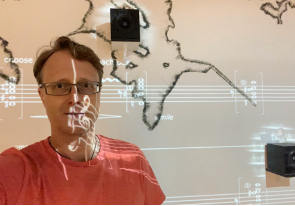
Dr PerMagnus Lindborg is a composer, sound artist, and researcher in sound perception. Fellow with Arctic Circle (2023); Principal Investigator for Multi-Modal Hong Kong (GRF 2023-25); commissioned/selected for ACL (New Zealand 2022), ArtScience Museum (Singapore 2021), Osage (Hong Kong 2021), CubeFest (Virginia 2019), Moderna Museet (Stockholm 2008); Centre Pompidou (Paris 2003) etc. Publications in Applied Acoustics, Frontiers, Leonardo, Organised Sound, PLoS One, and ICAD, ICMC, SMC etc. Created DACA Conference on Data Art for Climate Action (2022) and Soundislands Festival (2013-17). Vice-President of ICMA and Associate Professor at School of Creative Media at City University of Hong Kong.
Multimodal Hong Kong :: Documenting intangible cultural heritage through soundscape and smellscape
The sensory cultural heritage creates identity and cohesion in a community. The Multimodal Hong Kong (MMHK) started in January 2023 and aims to build a database of soundscape and smellscape at culturally significant sites. In this talk, the Principal Investigator will introduce the project and its objectives, present results from a pilot survey, and describe the development of a field work methodology. Data collection methods include Ambisonics audio, 360 ̊ video, and ‘smellprints’, together with on-site observations based on the Soundscape Indices survey protocol and the Dravnieks-McGinley-Zarzo ‘smell atlas’. Currently having data from 20+ sites, MMHK aims to reach 100 within the project’s duration, as well as conduct outreach such as sensory walks, interviews, and workshops with stakeholders. The overall goal is to produce in-depth knowledge of how information, via multiple sensory modalities, constitute the perceived quality of places, and thence, how an intangible cultural heritage emerges in Hong Kong. This knowledge will enable future research and applications in urban spatial design, experiencescape, and virtual tourism.
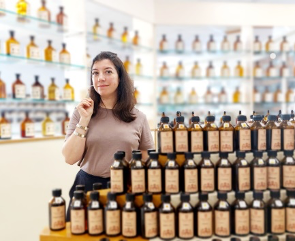
Dr Cecilia Bembibre is a lecturer at UCL Institute for Sustainable Heritage and deputy lead for the MSc Sustainable Heritage. Her research explores the intersection between material and intangible heritage. In the past few years, she has focused on sensory and intangible heritage, working with policymakers, GLAM professionals and communities towards documenting smells with cultural significance. As part of this work, she has developed a framework and methods to identify and safeguard historic odours, combining participatory methods with analytical science. She led olfactory preservation work in the Horizon 2020 Odeuropa project.
Olfactory heritage: opportunities for policymaking
Although culturally impactful, the significance of scents and olfactory practices connected with heritage are rarely recognized. This is caused by 1) fragmented knowledge of the sensory worlds of the past and the present, 2) the low awareness of the importance of smells and olfaction in intangible heritage practices, and 3) the lack of adequate methods to identify, record and safeguard smells, olfactory practices and their specific significance. Due to this, we are at risk of losing smellscapes and olfactory practices meaningful for certain regions and communities. Furthermore, we are neglecting opportunities to strengthen the strategic agendas of (inter)national heritage bodies with a sensory dimension, which could enhance their value and accessibility. In this session, Cecilia will discuss recent work in olfactory policymaking, as a result of three round tables with representatives from UNESCO, ICCROM, Europeana, various European Ministries of Culture and galleries, libraries, archives and museums.
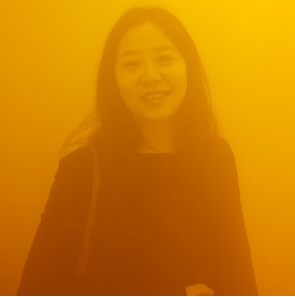
Dr Jieling Xiao is a Reader in Architecture and Sensory Environment at Birmingham School of Architecture and Design and co-director of the Urban Cultures research cluster. Her expertise and interests lie in theories and creative practices of place-making and environmental design that interpret and play with people’s sensory experiences, particularly concerning soundscape and smellscape. She is a member of the UKRI Interdisciplinary Assessment College, editorial community for Springer Nature for the Journal of the Humanities & Social Sciences Communications, and Subsection editor for the Journal of Contemporary Urban Affairs. Her recent research focus is sensory sustainability and inclusive design with a multi-sensory approach, addressing the impacts of pressing societal and environmental issues such as climate change, biodiversity loss and ageing.
Spatializing sound/smell memories with sketching and making
This talk will present reflections on an exploratory workshop with participants using sketching and making alongside sound/smell-scape protocols to gain a better spatial understanding of recalled sounds and smells in Birmingham Bullring markets. Sensory stimuli are often triggers of involuntary memories. In the famous example of Proust’s Madeleine in Swann’s Way, starting from the taste of Madeleine, the recalled memories expanded into spatial scenarios from his aunt’s room in the old grey house to the square and streets he used to visit in the town. In this example, taste and smell trigger spatial memories (where and what) that are primarily verbalized as visual information but also reference kinaesthetic movement (i.e., running). Do all sensory memories lead to spatial recall? Taking the body-image concept, the workshop followed a three-step process of describing (protocol), situating (sketching), and annotating (making). The workshop is an initiative to examine how much spatial information and imagination are involved in recollections of sounds and smells and whether it is possible to spatialize memories of sounds and smells. This opens up a conversation on interdisciplinary approaches to using sound/smell-scape protocols.
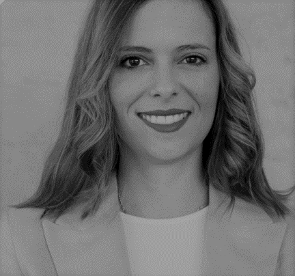
Giulia Torriani is a PhD candidate at the Department of Civil, Environmental and Mechanical Engineering (DICAM) at the University of Trento (Italy), collaborating with the Institute of Renewable Energy at EURAC Research (Bolzano, Italy) and the Center for Mind/Brain Sciences (CIMeC) of the University of Trento (Italy). Her doctoral research, titled “From Neutrality to Dynamic and Multisensory Variability in Office Buildings: Rethinking Air Quality Comfort through Indoor Smellscape Modelling”, explore innovative approaches to IAQ design and management.
Rethinking perceived indoor air quality assessment through an indoor smellscape approach
Designing and managing indoor air quality (IAQ) in buildings is crucial for ensuring people´s comfort, health, and productivity. A systematic review of 97 papers focused on office environments reveals that the predominant criterion for designing and evaluating perceived air quality is based on odour control. According to this approach, an office environment is considered satisfactory if it maintains a state of olfactory neutrality, where no odours are perceptible. However, neutralizing odours might not always be the ideal solution. Research indicates that the presence of pleasant olfactory stimuli can enhance comfort more significantly than the complete absence of detectable odours. Such positive olfactory experiences are shown to improve mood, well-being, and health, and increase satisfaction in the indoor built environment. Drawing parallels from advancements in indoor soundscape practices, the review proposes a paradigm shift in IAQ assessment and design practices—from perceiving odour as a “waste” to recognizing indoor smellscapes as a valuable “resource” for the built environment. If various tentative examples of scent usage can be found in architectural and design practice, guiding design through smellscape requires methods and tools to assess (and predict) people´s affective response to the olfactory environment. The talk outlines the proposed framework for indoor smellscape, applicable in office settings and extendable to residential and heritage contexts, as well as the proposal for a catalogue of smellscape interventions to be a reference for practitioners in building design.
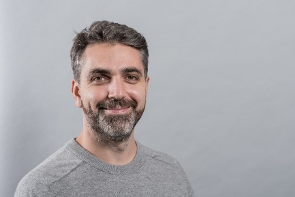
Dr Francesco Aletta is a Lecturer (Teaching) in Building Physics and Soundscape based in London at the UCL Institute for Environmental Design and Engineering. He is a member of the Italian Acoustical Society (AIA) and the Secretary of the Technical Committee Noise of the European Acoustics Association (EAA). He has been active for more than 10 years in soundscape studies, and environmental acoustics more broadly, with a particular focus on soundscape descriptors and indicators and the harmonization of protocols for gathering perceptual data on acoustic environments. He is appointed by the British Standards Institution as Committee Member in the WG 54 “Perceptual assessment of soundscape quality” to work on the development of the ISO 12913 series on soundscape.
Defining acoustical heritage: A qualitative approach based on expert interviews
The study of acoustics and sound in the context of heritage is rich and diverse, yet it lacks a unified framework for defining and understanding acoustical heritage. This presentation explores the complexities of acoustical heritage by examining expert perspectives via thematic analysis. Many disciplines have embraced sound as a subject of inquiry, extending to the realm of heritage studies. However, while the significance of sound in shaping cultural identity is increasingly acknowledged, acoustical heritage remains undervalued as a distinct category worthy of preservation. Through in-depth interviews with experts spanning architecture, archaeology, acoustics, and conservation, diverse viewpoints converge to inform a holistic definition of acoustical heritage.